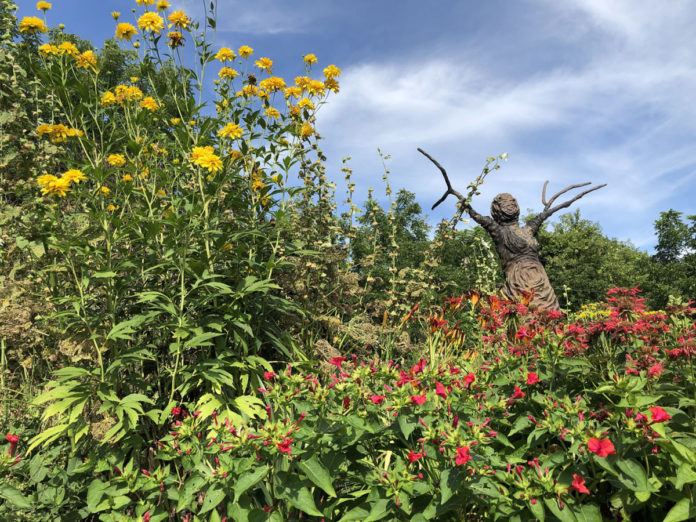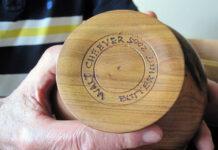It started with a bucket of worms.
I was living in St. Paul and visiting EggPlant Urban Farm Supply when I spotted on the shelf something called the Super Basic Worm Bin. I was curious. The staff told me about worm composting, how simple, scentless, and efficient it was, all that methane gas it kept out of our atmosphere. Sounded good to me, plus I wasn’t allowed to have real pets in my duplex. Worms would have to do.
A week later I was picking up my own basic worm bin complete with shredded newspaper and a paper baggie of fresh-off-the-worm-farm red worms. I named them collectively Haircut and started feeding them my kitchen scraps in exchange for beautiful fresh compost and worm tea, casting so nutrient-charged that farmers call it “black gold.”
Decomposition was the beginning of my interest in more efficient living. From that starting point I began exploring all the areas of my lifestyle that produce waste, which lead me to exploring principles of minimalism, plastic-free living, and the ways patience and better design can eliminate the invisible harm we do in our daily lives. It’s been years and Haircut is still alive and well, now grown into a much larger bunch, living in a worm condo my dad and I built with 5-gallon buckets. I am also always growing.
That’s how my zero-waste journey began; with a bucket of worms. How will yours?
The Problem
There are obvious things we know are bad for us. We don’t walk into burning buildings or climb into the bison enclosures. But the really insidious threats are the ones that happen slowly and quietly over time. Things in our everyday that, without our notice, build up to haunt us later. One of the most striking examples is the fossil fuel we consume daily in plastic.
You’ve seen the graphics about cutting up six-pack rings and not using straws to save the turtles. But this isn’t just about the turtles somewhere far away and forgettable. This is about us, our bodies, and our family. We’re choking on plastic too.
Plastic does not break down like other materials. Instead, it breaks up, into teeny tiny pieces. Those plastic pieces absorb dangerous chemicals like PCBs and DDT, become microscopic and enter our food chain. You and I are already about a heaping dinner plate’s worth of plastic each year. Reuters created a page for visualizing plastic consumption.
Unfortunately, recycling is not the solution to our plastic problem. Most plastics cannot be recycled more than once, and much of what ends up in recycling centers is what is called “wishful-recycling” which means a bunch of stuff we think might be recyclable but is not ends up in the landfill no matter where we put it. Remember that all garbage remains on the planet, no matter how far you get it away from you. There is truly no “away” to throw it all.
Sustainable Mankato
Mankato residents are already doing incredible work to combat waste and plastics.
Laura Peterson is with the Living Earth Center, which is going on its third year as a local non-profit. “We want people to be good to others and to themselves and to the earth,” said Peterson . The Living Earth Center puts on yearly conferences in November, as well as a minimum of 3 workshops a month with topics like how to raise backyard chickens, and how to store seeds. They also tend the community garden on the former farm site of the School Sisters of Notre Dame. The community garden is over 2 acres with plots serving over 120 growers. I recently walked through the garden, which is blooming with sunflowers, and ripe with greens, onions, tomatoes. Every inch of it is growing directly from the care and passion of the countless people who made it possible.
We want people to be good to others and to themselves and to the earth.Laura Peterson
“We want to cross every boundary and bring people together to literally and figuratively share common ground,” said Peterson. “We want to be not only environmentally sustainable and resilient, but also socially sustainable and resilient. There’s a diverse richness in our community, and we want to uplift that and keep it diverse, like any healthy ecosystem.” Due to COVID-19 their Community Common Ground Series has been postponed but keep an eye out. You won’t want to miss mashups like “Pollinators and Punk Rock.”
Mankato Zero Waste is another local effort born at a visioning conference in May of 2013, sponsored by Transition Mankato. They asked what type of community they’d like to see in 5-10 years and then took action to create it. Food waste and scraps left to decompose in landfills create methane gas and is the third largest contributor to climate change behind fossil fuels and deforestation. They realized ⅓ to ½ of a resident’s waste is organic, and Mankato had no programs to deal with that.
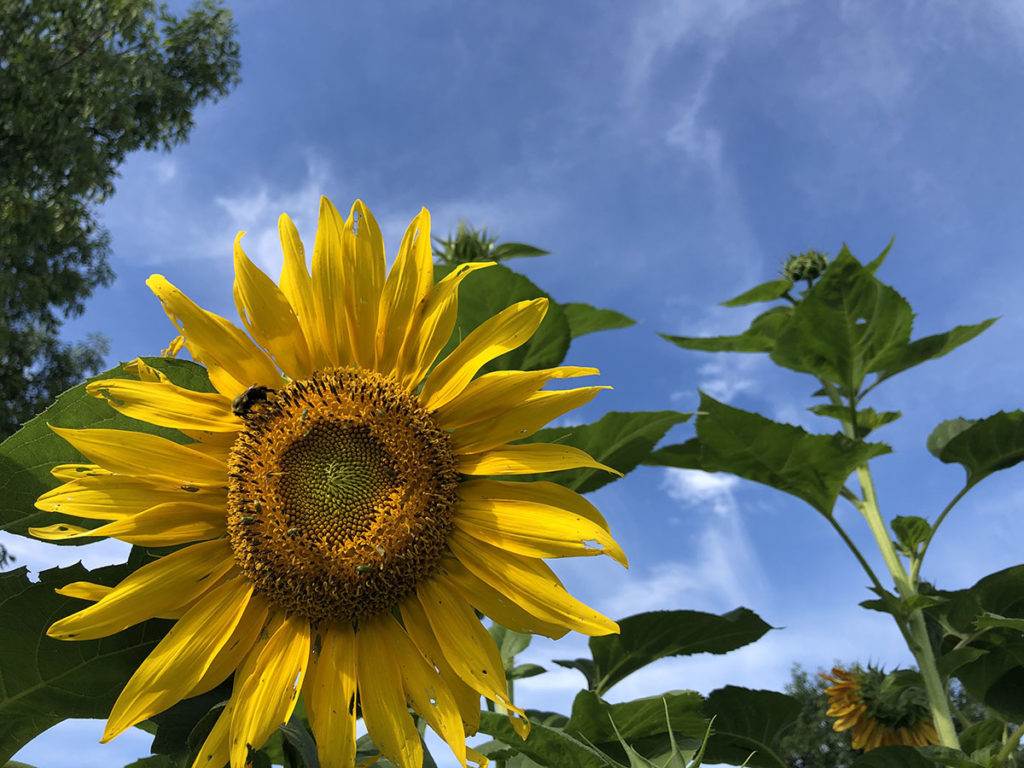
In 2015, Betty Winkworth, Katie Wortel and Jae Dow asked the city to use their bus garage on Lamm Street as a drop off site for organics recycling, which was then picked up by Full Circle compost facility. Their operation took off. In 2017, they collected and recycled 86,686.45 pounds. That’s 43.34 tons. In 2018 they recycled nearly 50 tons of organics and prevented an estimated 36.94 mtCO2e (metric ton carbon dioxide equivalent) from entering the atmosphere. And all that “waste” goes to the Empire Compost Facility in Rosemount where it begins another cycle as nutrient-packed compost for farmers and gardeners.
Mankato Zero Waste is now teaming up with the Blue Earth Project to collect pledge signatures to reduce waste. With enough signatures, they will be able to approach the city council about ways to reduce plastics in Mankato. The pledge is available on the Mankato Zero Waste website.
If you’re interested in joining Mankato Zero Waste, you can begin today, completely free. Just collect food scraps (I like to keep a lidded 5-gallon bucket) and when it’s full, bring the materials in a compostable bag to any of the listed dumpsters, which are unlocked and available 24/7. If you do decide to join, call the Mankato, North Mankato, or Lake Crystal city offices, or sign up on the Mankato city website. Registering shows the city how valuable these resources are.
These are just some of the incredible efforts made in Mankato. Behind the scenes, at the grocery store, in backyards, residents are quietly taking sustainable action into their own hands.
The First Steps
Our journey into more mindful and sustainable living begins with taking responsibility for our choices. This is a difficult step. Looking at our own environmental impact can feel overwhelming, frustrating, and unpleasant. Fear of not being waste-free enough, or feeling like we can’t actually make a difference, can make us quit before we even get started. Many struggle with feeling “hypocritical” if they are waste-free in one area of their life but not in others.
The Buddha taught, “My actions are my only true belongings.” And I’m here to tell you no step is too small and no change is too trivial. Besides, literally no one is perfect so you might as well give it a try. Your actions are valuable, necessary, and more wide-reaching than you realize.
In a society built around convenience, it is truly radical to slowly and mindfully address the choices you make in your daily life. Start small. Be patient. And when you make a small change, celebrate. Be proud. You’re a part of something vital.
These small actions feed our compassion. We water this seed of compassion, each time we refill our reusable water bottle, each time we put food scraps in the compost instead of in the landfill, each time we tend our garden, and quickly we are invested in a lifestyle that benefits the earth and everyone on it.
Here are some suggested first steps.
Food
When we talk about our consumption and waste, food is the most literal topic. It’s also the easiest place to start making a big difference. Small, simple changes quickly make a huge impact.
- BYO Bag – If you don’t want to be the weirdo waddling to your car with an armful of loose produce and a watermelon between your legs (totally embarrassing but sometimes it happens) I recommend keeping a stash of durable bags in all the important places: pockets, purses, glove boxes. There are reusable bags like Bagcu that can fold and fit in a pocket. Plus, reusable bags are stronger, so you never have to deal with that handle-ripping-groceries-all-over-the-pavement nightmare ever again.
- BYO everything for that matter – Some of my favorite items to keep handy are my Klean Kanteen thermos and water bottles and my bamboo To-Go Ware. Instead of buying water bottles, I can refill for free, my beverages keep their temperature better, don’t spill, and most places give you a discount for bringing your own coffee mug.
- Pass on Plastic Packaging – Somewhere I heard the saying, “If it has a commercial, it’s probably not good for you.” And when it comes to food, that seems to be almost always true. The food industry is the second biggest spender on advertising in the United States, second only to the auto industry. And all that advertising leads us to over-processed, over-packaged foods. (Search for Pointless Packaging for some examples.) The less packaging and pizazz between you, your food, and your environment, the better.
- Garden – It doesn’t have to be substantial. It doesn’t have to look pretty or impressive. Whether it’s herbs in your window or a plot in a community garden, just growing one piece of food you can eat will help personalize the amazing phenomenon behind every bite.
- Buy local – Farmer’s Markets not only support local growers. They provide you with fresher, more nutrient dense foods, and cut out all that wasteful shipping and packaging. The Mankato Farmer’s Market is blessed with many skilled growers, and there are amazing Farmer’s Markets, sweet corn trucks, and farm-fresh eggs all over Minnesota.
- Buy bulk – Hy-Vee and Cub foods both offer bulk bins of coffee, grains, candy, and nuts. I use reusable cloth and mesh produce bags like the ones available here which I bought over two years ago and they are still in great shape. Buying bulk of products with a long shelf life is another way to reduce trips to the store and produce less waste.
- Keep perishables visible – It’s a vicious cycle. I buy that fresh, beautiful produce, put it in the fridge, and next thing I know, it’s been a month and I discover the unidentifiable mush of mold. The solution: display your perishable items where you can see them. Here is a resource for proper fruit and veggie storage.
- Use every bit– Smoothies, soups and stews are your friend. Before you toss it, make sure there isn’t another use for it.
- Compost– Beautiful, beautiful compost. Bring it to Mankato Zero Waste or start your own compost.
NOTE: Some of the suggestions in this list such as bringing your own durable bags, bringing your own mug, or buying in bulk may be prohibited at local stores as a COVID prevention measure.
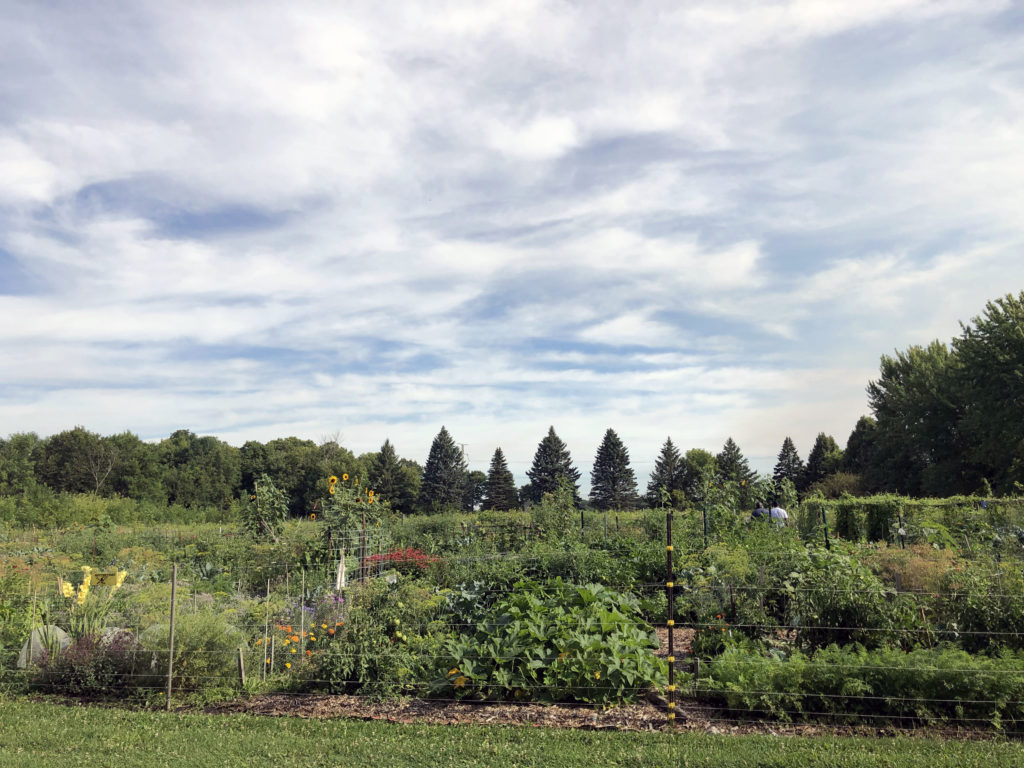
Laundry
- Wash – I have had great success using Dropps plastic-free detergent with carbon neutral delivery.
- Dry – Reusable wool dryer balls are an easy swap for sheets, which release microplastics directly into the water. Of course, air drying is also another wonderful waste-free method.
Grooming
When caring for your body, it’s easy to believe ads and promises, while completely missing the landfill-bound plastic bottles and toxic ingredients hidden inside. Eco-conscious grooming is simpler than you may think.
- Bars – For my hair I have used HiBar, which is a Minnesota based shampoo and conditioner brand free of sulfates and silicones. I also skip the aerosol sprays and instead do “dry-shampoo” touchups with cornstarch. Darker hair colors can use arrowroot and cocoa powder.
- No poo – As in “no shampoo.” Many used the lockdown and the privacy it provided to try new things with their hair. Friends were dying and shaving left and right. I decided to try something I’ve been thinking about for years: going as long as I could without shampooing. Now I instead supplement with baking soda and apple cider vinegar and my hair is as fresh and clean as it was before, and feels healthier too. Here’s a tutorial.
- Reusable razors – This is one I have not yet made the investment in, but I’m excited to try!
- DIY – You can make so many beautiful and effective products at home with natural ingredients you already have. Plus, it’s fun to create! My fiancé is getting used to finding my concoctions and potions around the house. My favorite DIY is a coffee body scrub. Mix melted coconut oil, used coffee grounds, and scent with vanilla, and ta-da! Lovely exfoliant that leaves your skin so silky.
Cleaning
- Buy Bulk – Before the great Toilet Paper Crisis of 2020 I was ordering bulk from Who Gives A Crap. Their packaging is completely plastic-free and because they ship bulk, I was already well stocked while everyone else was frantically buying T.P. Highly recommend treating yourself with their premium ply.
- Vinegar – This one I have just started trying, but supposedly vinegar has all the same cleaning power of anything in the vast assortment of sprays under the sink, minus the dangerous chemicals.
Closet
This is another area that can fly under the radar, but people are becoming increasingly aware of the harmful conditions sweat shops, as well as the toxic materials used to make clothing.
- Avoid fast fashion – Brand new and cheap clothing is rarely ethical. The more you divest from trends the more money you save. Here’s a great video about capsule wardrobes which helped put my clothing needs in perspective.
- Comfort – Clothes that physically feel good are more likely to be worn. So, while you might enjoy the way you look in the tight jeans, heels, or heavy leather jacket, ask yourself if it’s something you’ll enjoy wearing often enough to be worth the waste.
- Durable – This is especially important when it comes to footwear. While I was still a dog walker I invested in durable sneakers, boots, and hiking sandals. Durable clothing might be more expensive, but it is an investment that helps you and the environment.
- Thrift – Whether from a thrift store, a garage sale, swapped with a friend or traded online, giving new life to used clothing is the easiest way to reduce waste in your closet.
- Repair – You don’t have to be Becky Home Ecky to salvage damaged clothing. Tailors, seamstresses and cobblers are all skilled craftspeople and they are available near you.
Convenience
A lot of these changes take extra time out of your day. For those who are busy and need options that fit their lifestyle, there are many great plastic-free shops just a click away, including the Package Free Shop, the Zero Waste Club, and LowToxBox.
Filling Your Feed
Probably the easiest step you can take is by filling your feed with resources. Some great local pages worth following include One Small Step, Minnesota Naturalists, the Blue Earth Project, and Sustainable in Mankato. There are hundreds of amazing free resources from all over the globe available at your fingertips. Seeing the work of zero-wasters daily can help keep you mindful of your choices and give you new ideas.
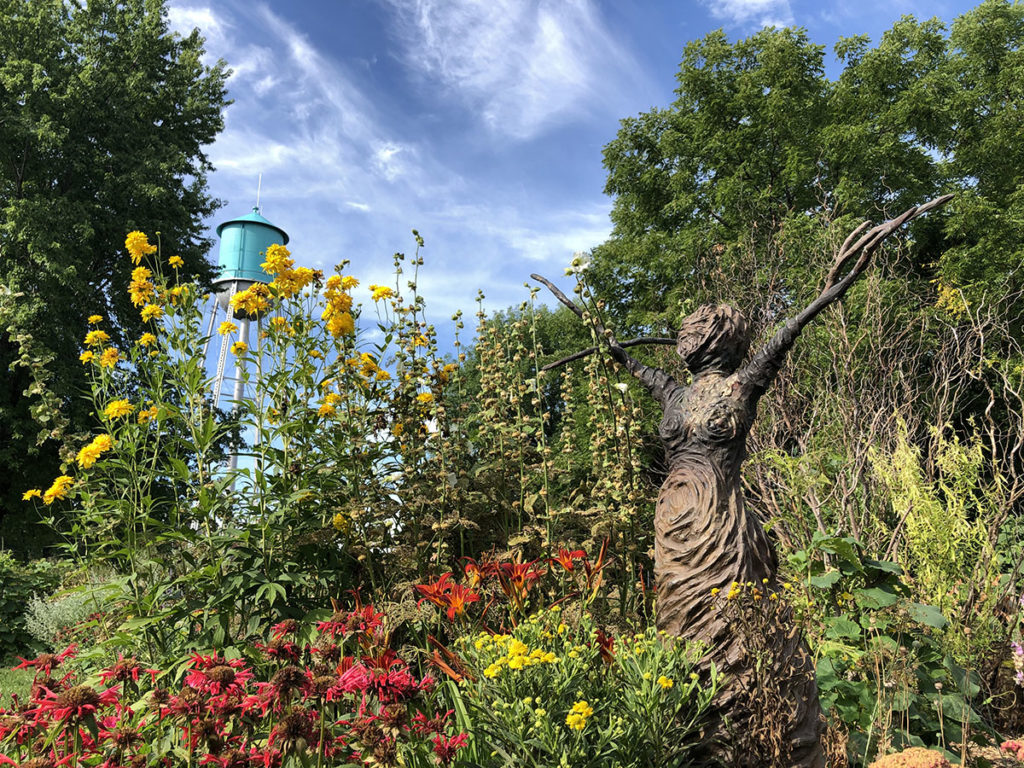
Generosity
Perhaps more important than the products we do or don’t buy is the attitude we take with us when we make our choices. Looking hopefully and environmentally into the future will keep us open to new opportunities to grow and adapt. Instead of “me” and “now” we can begin to think in terms of “we” and “for years to come.”
Acting with generosity grows from an appreciation of abundance. Mass media and western philosophies often create the illusion of scarcity, causing us to feel competitive and hoard our resources. When we recognize our abundance, we can begin to loosen our hold on material things. I find gardening especially develops generosity. Right now, we have a fridge full of cabbage, greens, and onions gifted to me by a new gardener friend, Joyce, and in return we have been sharing our cucumbers and jalapenos with whoever will take them. Generosity grows generosity.
You can also simply support causes monetarily. Money is energy, and when you spend your energy on waste-free options, the more waste-free options become available as supply moves to meet the demand.
Transforming
I find that when I eliminate waste, I gain in every other area of my life. That mindless decision to buy plastic wrapped bread can be transformed into an afternoon of baking. Instead of believing advertisements that tell me I need something more in order to be happy, I feel gratitude for what I already have. Instead of accepting things because “that’s the way they’ve always been,” I feel confidence in my ability to control my choices.
It is not enough to know the information, otherwise reliance on fossil fuels and wasteful practices would have been eliminated decades ago. Intellect alone does not inspire action. We also need compassion. Compassion is the fuel to carry us forward. When we feel compassion for ourselves, our well-being, and the well-being of our neighbors, community, and world, we are moved to act.
How Will You Start?
Perhaps you take the first step out of curiosity, as I did. “What can I do with a bucket of worms?” These small actions feed our compassion. We water this seed of compassion, each time we refill our reusable water bottle, each time we put food scraps in the compost instead of in the landfill, each time we tend our garden, and quickly we are invested in a lifestyle that benefits the earth and everyone on it. We live compassionately.
We are not islands. Our actions affect the world. I hope that COVID-19, its economic fallout, and recent turmoil have made this fact more obvious than ever. We are directly influenced by our environment, but we can also influence our environment. We can make our community bloom. All living creatures have a massive and far-reaching impact. Remember that you are reading this now because of some humble worms.
“A student asked Thay, ‘There are so many urgent problems. What should I do?’ Thay answered, ‘Take one thing, do it very deeply and carefully, and you will be doing everything at the same time.’”
Now take one thing.

